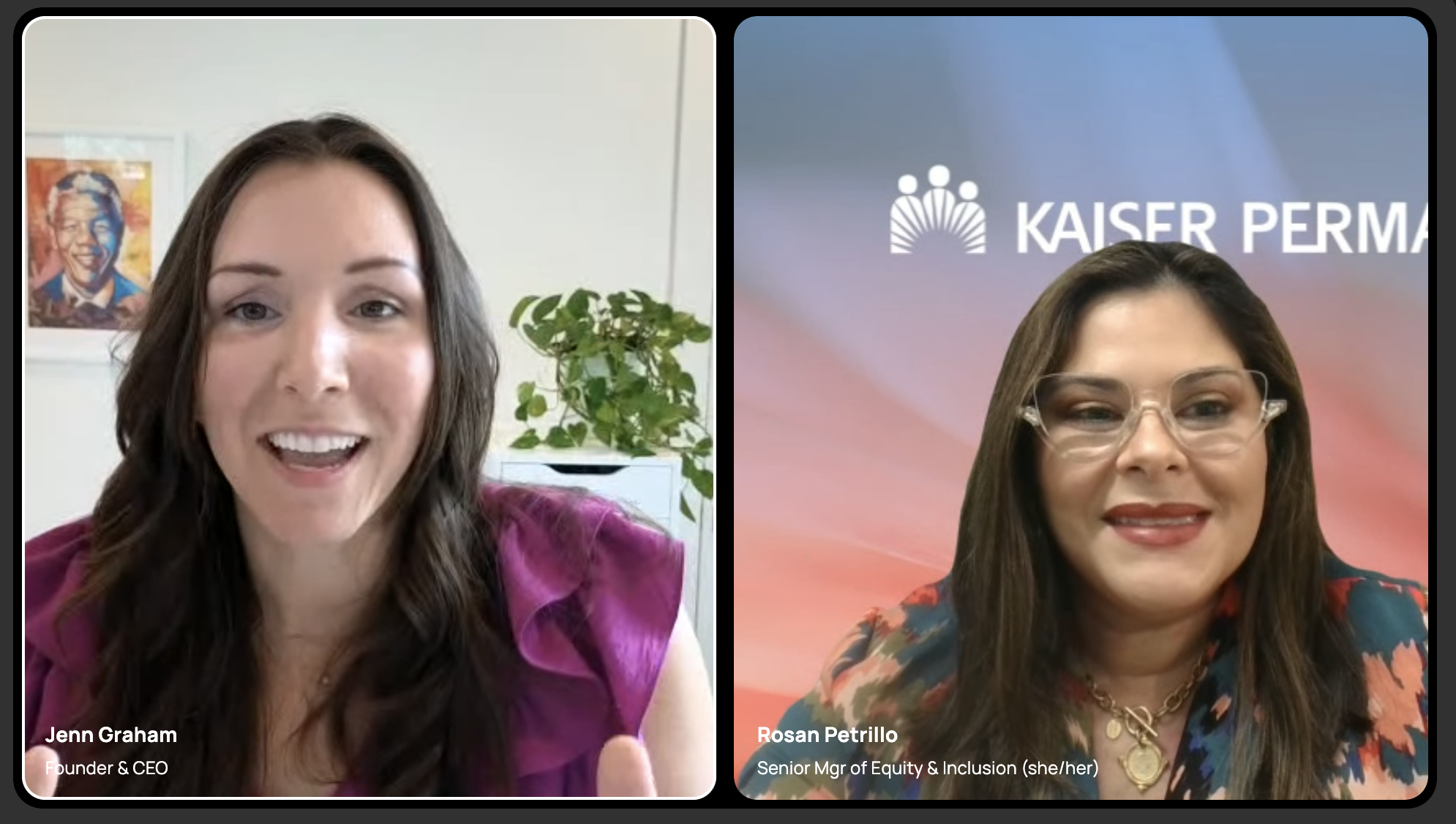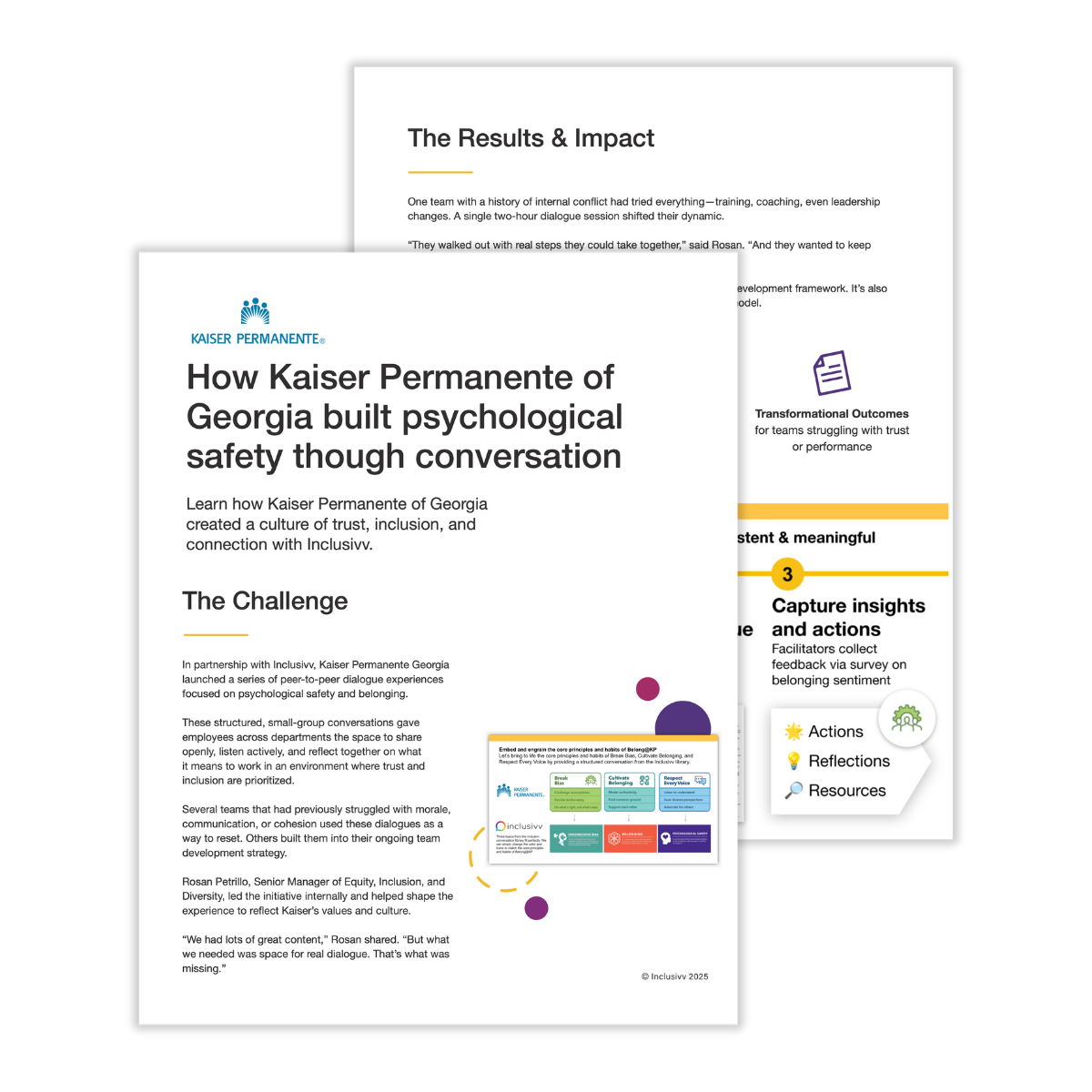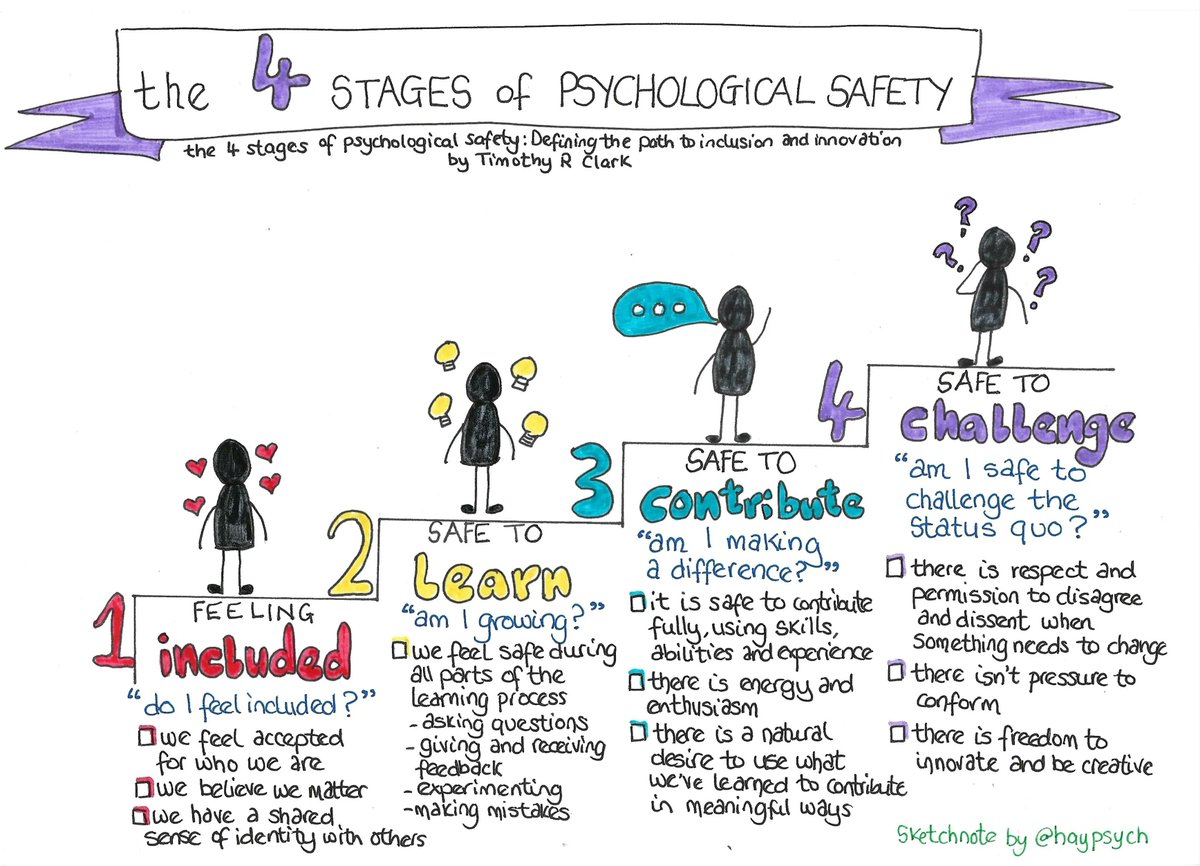PSYCHOLOGICAL SAFETY
How Psychological Safety Creates Brave Spaces for Trust, Innovation, and Belonging
A powerful conversation with Kaiser Permanente Georgia on how to build trust and connection through dialogue.
About the Webinar
In this conversation hosted by Inclusivv and SHRM, we explored what it really takes to create psychological safety at work — not just in theory, but in practice.
We were joined by Rosan Petrillo, Senior Manager of Equity, Inclusion, and Diversity at Kaiser Permanente Georgia, who shared how her team is using dialogue to build trust, repair team dynamics, and make psychological safety a living part of their culture.
You’ll hear real examples, honest insights, and practical tools that HR and team leaders can use right away.

Kaiser Permanente of Georgia Impact Story
Kaiser Permanente Georgia partnered with Inclusivv to create a culture of psychological safety using peer-to-peer dialogue. Over 18+ months, teams across departments used structured conversations to strengthen connection, rebuild trust, and shift culture from the inside out.
What started as a pilot quickly became a recognized part of their team development and credentialing process.
Want the full story?

Key Takeaways from the Conversation
We pulled together the highlights from the webinar and our work with Kaiser into a blog post that covers:
- Why psychological safety matters now more than ever
- How dialogue helps unlock trust and innovation
- What HR and team leaders can do to make brave spaces real

How do we create safety in environments where things are very politically charged?
Start by acknowledging that people are bringing a lot with them when they walk through the door. That’s human.
- One way to create safety is to focus on shared values like respect and curiosity.
- Remind teams that work is a space for collaboration, not conflict.
- Encourage active listening and set clear expectations for how conversations should be handled.
- Creating community agreements or group norms can go a long way in building trust, even when people disagree.
How would you ensure you maintain psychological safety when working through performance feedback?
Start with curiosity and care. Let the person know you're here to support their growth, not just evaluate their work.
Ask questions, listen actively, and frame feedback as an opportunity. It helps to use clear, kind language and share specific examples.
Always give feedback in private, and leave space for their thoughts or reactions. When feedback feels like a conversation, not a critique, people are more open to hearing it.
How do I get my supervisor on board with practicing psychological safety? Any tips for broaching that conversation?
You can start by sharing how psychological safety connects to outcomes your supervisor cares about, like team performance, retention, or innovation. Try asking open questions like, "What would it take for our team to be more comfortable speaking up?"
You might also suggest reading a quick article or video or invite them to a conversation or training. Framing it as a tool to help the whole team succeed can make it feel less personal and more strategic.
What if you are a HR team of one. How do I reinforce the need with the C-suite for the importance of psychological safety?
Being a team of one is tough, but your perspective is powerful. Share data when you can, whether that's exit interviews, engagement surveys, or examples from trusted sources.
Make the case that psychological safety isn't just a "nice-to-have," it directly impacts the bottom line. You can also share stories of companies that have seen success through this lens. Even short, consistent conversations with leaders can help build momentum over time.
What are some ideas to break the ice when employees are already burned out, not trusting of management, or willing to be vulnerable with colleagues?
Start small and genuine. Ask light questions like "What's bringing you joy lately?" or "What's a small win from this week?" Humor helps too. Make it low pressure and give people the option to pass. The key is consistency. When people see that the space is safe and nothing bad happens when they share, trust slowly starts to build.
Do you have a recommendation of a climate or engagement survey that you have used in the past?
At Inclusivv, we built a platform that acts as an NPS survey to capture data on four key behavior indicators. If you're looking for something lighter, Google Forms or SurveyMonkey with custom questions can work too. The most important part is acting on the feedback. People are more likely to engage if they see that their voice leads to real change.
Need help bringing psychological safety to your team?
Contact our sales team to schedule time to talk.